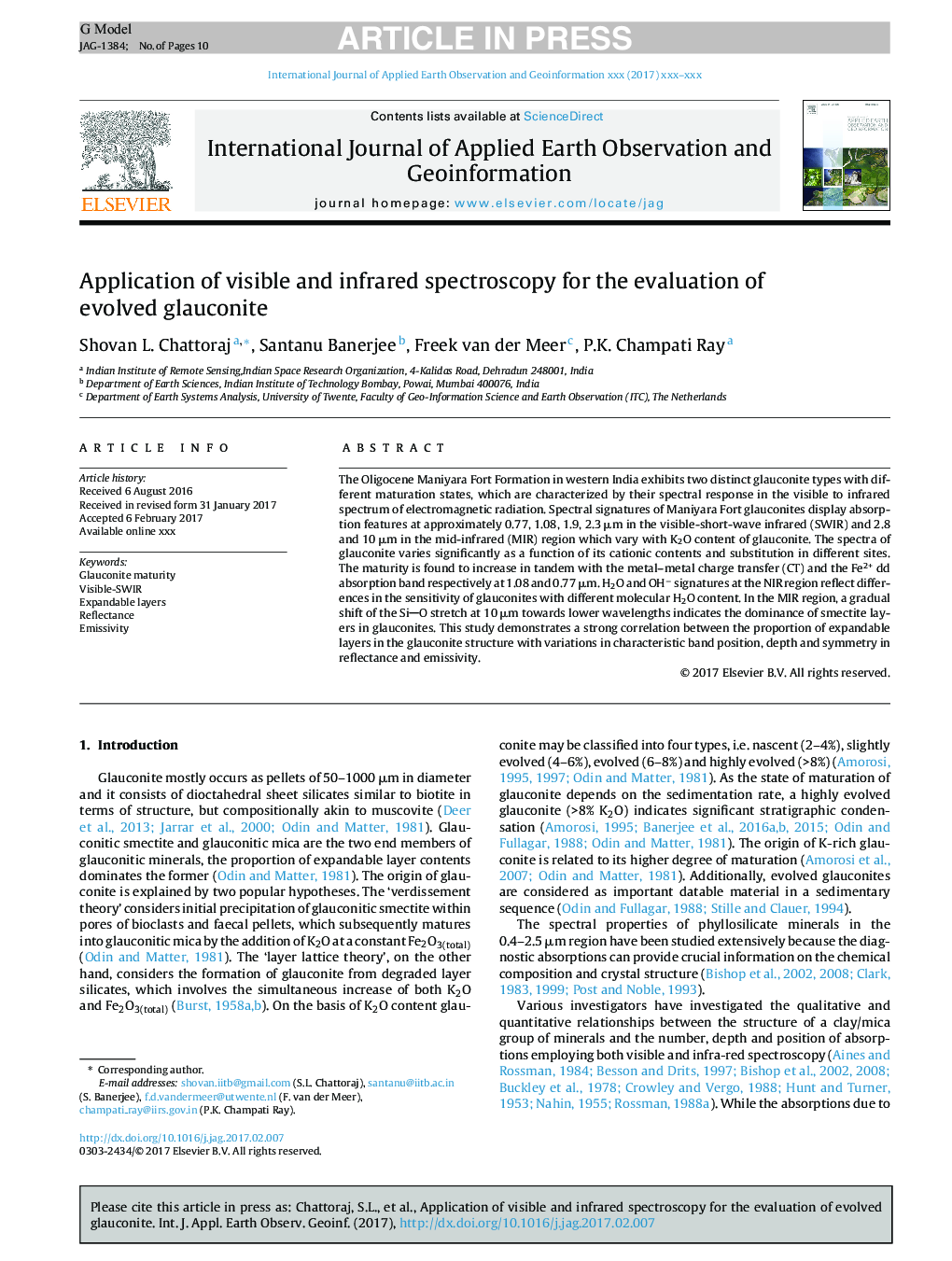| Article ID | Journal | Published Year | Pages | File Type |
|---|---|---|---|---|
| 8868042 | International Journal of Applied Earth Observation and Geoinformation | 2018 | 10 Pages |
Abstract
The Oligocene Maniyara Fort Formation in western India exhibits two distinct glauconite types with different maturation states, which are characterized by their spectral response in the visible to infrared spectrum of electromagnetic radiation. Spectral signatures of Maniyara Fort glauconites display absorption features at approximately 0.77, 1.08, 1.9, 2.3 μm in the visible-short-wave infrared (SWIR) and 2.8 and 10 μm in the mid-infrared (MIR) region which vary with K2O content of glauconite. The spectra of glauconite varies significantly as a function of its cationic contents and substitution in different sites. The maturity is found to increase in tandem with the metal-metal charge transfer (CT) and the Fe2+ dd absorption band respectively at 1.08 and 0.77 μm. H2O and OHâ signatures at the NIR region reflect differences in the sensitivity of glauconites with different molecular H2O content. In the MIR region, a gradual shift of the SiO stretch at 10 μm towards lower wavelengths indicates the dominance of smectite layers in glauconites. This study demonstrates a strong correlation between the proportion of expandable layers in the glauconite structure with variations in characteristic band position, depth and symmetry in reflectance and emissivity.
Keywords
Related Topics
Physical Sciences and Engineering
Earth and Planetary Sciences
Computers in Earth Sciences
Authors
Shovan L. Chattoraj, Santanu Banerjee, Freek van der Meer, P.K. Champati Ray,
